Toyota Sienna Service Manual: Data list / active test
1. DATA LIST
HINT: Reading the DATA LIST displayed on an intelligent tester enables values, including those of the switches, sensors, and actuators, to be checked without removing any parts. Reading the DATA LIST as the first step in troubleshooting is one method to shorten diagnostic time.
NOTICE: In the table below, the values listed under Normal Condition are for reference only. Do not depend solely on these values when determining whether or not a part is faulty.
- Warm up the engine.
- Turn the ignition switch off.
- Connect an intelligent tester to the DLC3.
- Start the engine.
- Turn the tester ON.
- Select the following menu items: DIAGNOSIS / ENHANCED OBD II / DATA LIST.
- Check the values by referring to the table below.
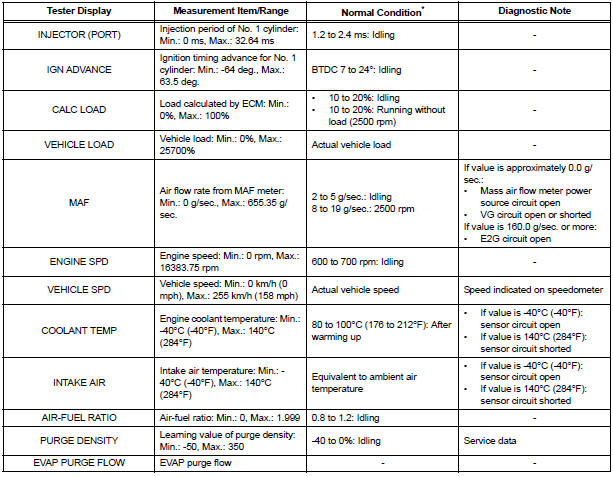
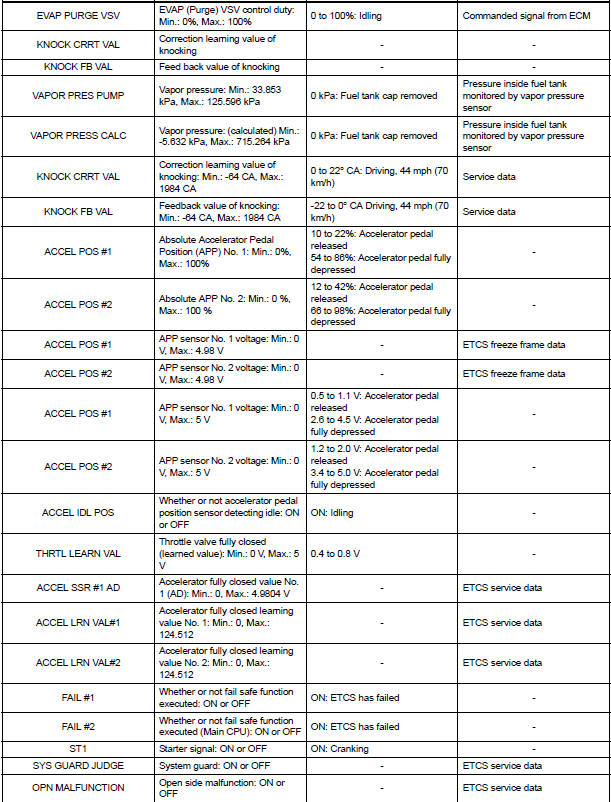
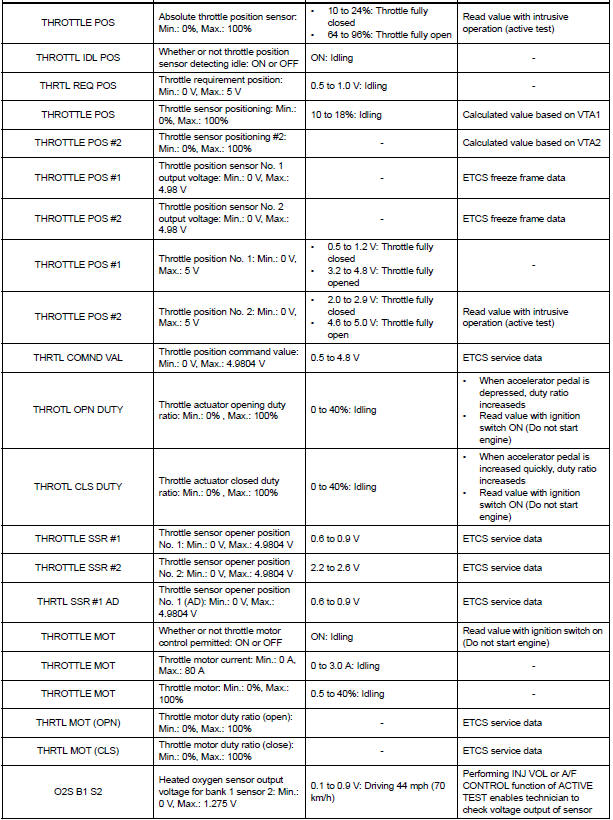
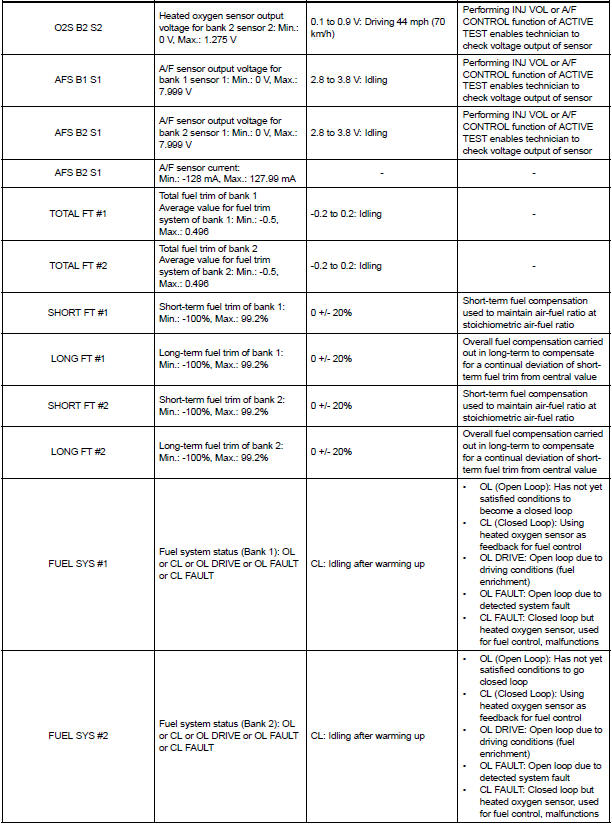
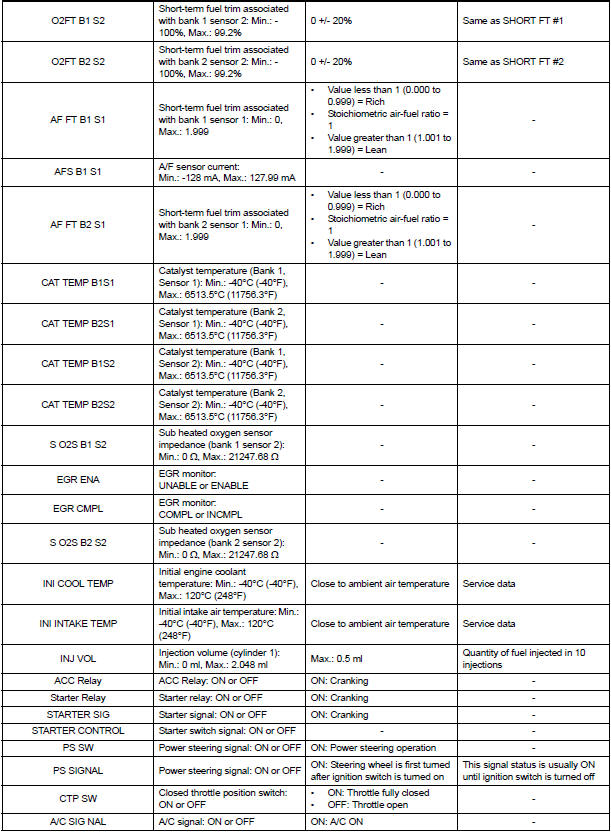
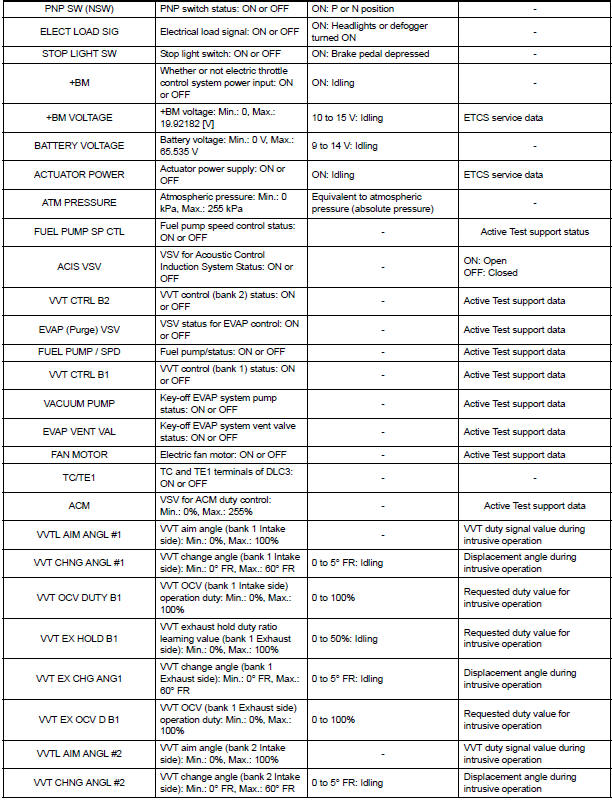
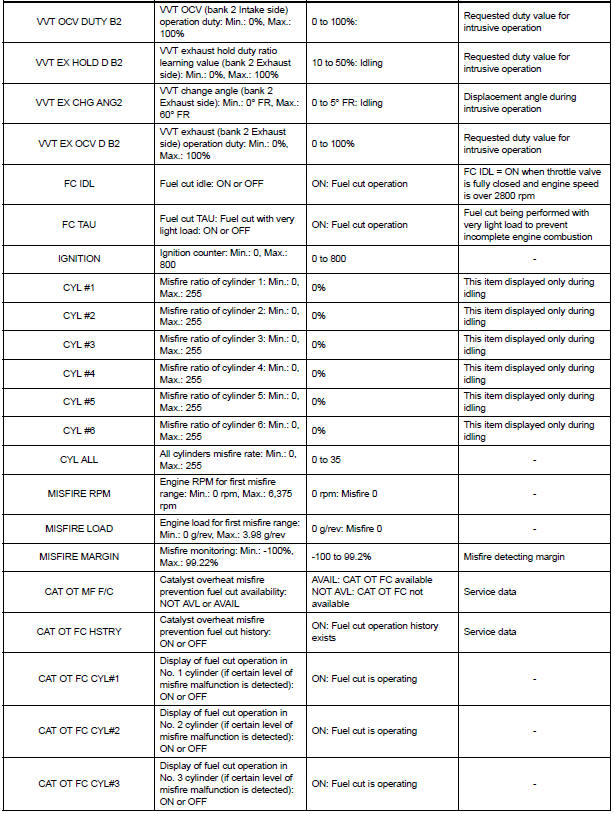
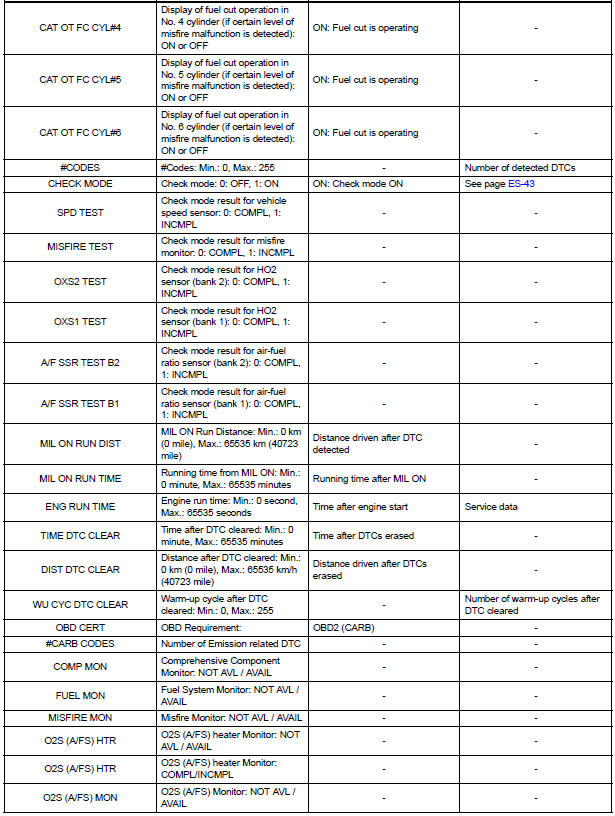
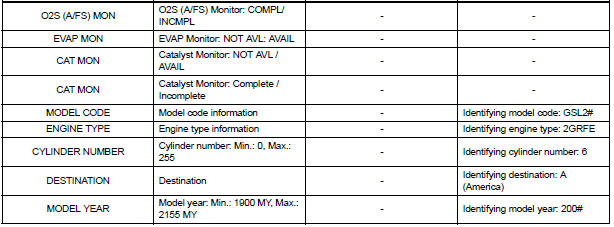
*: If no idling conditions are specified, the transmission gear selector lever should be in the N or P position, and the A/C switch and all accessory switches should be OFF.
2. ACTIVE TEST
HINT: Performing an ACTIVE TEST enables components including the relays, VSV (Vacuum Switching Valve), and actuators, to be operated without removing any parts.
The ACTIVE TEST can be performed with an intelligent tester. Performing an ACTIVE TEST in the first step in troubleshooting is one method to shorten diagnostic time.
DATA LIST can be displayed during ACTIVE TESTs.
- Connect an intelligent tester to the DLC3.
- Start the engine.
- Turn the tester ON.
- Select the following menu items: DIAGNOSIS / ENHANCED OBD II / ACTIVE TEST.
- Perform the ACTIVE TEST by referring to the table below.

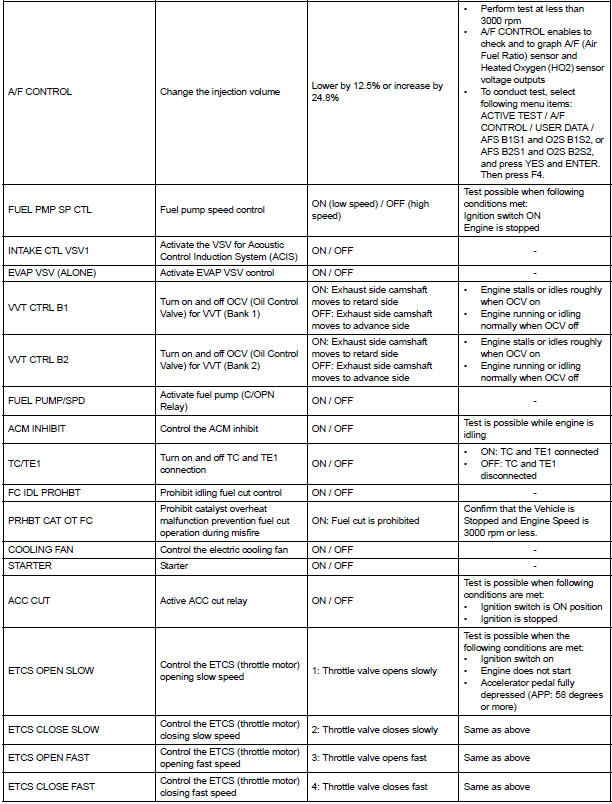
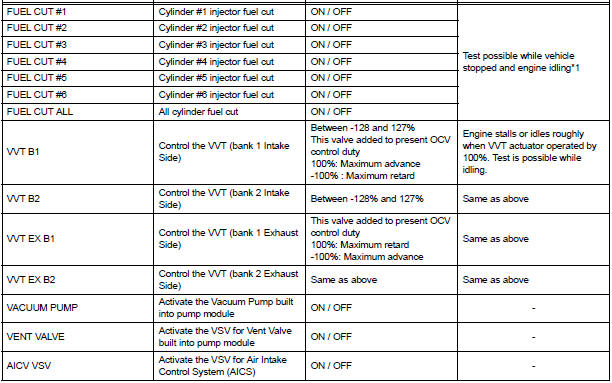
NOTICE:
- *1: If the display of the DATA LIST's CAT OT MF F/C item is NOT AVL, perform this ACTIVE TEST with the vehicle stopped and the engine idling.
- *1: If the display of the DATA LIST's CAT OT MF F/C item is AVAIL, perform this ACTIVE TEST as described below.
- Stop the engine and turn the ignition switch ON to turn FUEL CUT#1 (to #6) ON.
- Start the engine.
3. SYSTEM CHECK
HINT: Performing a SYSTEM CHECK enables the system, which consists of the multiple actuators, to be operated without removing any parts. In addition, it can show whether or not any DTCs are set, and can detect potential malfunctions in the system. The SYSTEM CHECK can be performed with an intelligent tester.
- Connect an intelligent tester to the DLC3.
- Start the engine.
- Turn the tester ON.
- Select the following menu items: DIAGNOSIS / ENHANCED OBD II / SYSTEM CHECK.
- Perform the SYSTEM CHECK by referring to the table below.

 Fail-safe chart
Fail-safe chart
If any of the following DTCs are set, the ECM enters fail-safe
mode to allow the vehicle to be driven temporarily.
HINT:
*1: The vehicle can be driven slowly when the accelerator
ped ...
 Diagnostic trouble code chart
Diagnostic trouble code chart
HINT:
The parameters listed in the chart may not confirm exactly to
those read during the DTC check due to the type of
instrument or other factors.
If a trouble code is displayed during the DTC ...
Other materials:
Removal
1. PRECAUTION
CAUTION:
Be sure to read "PRECAUTION" thoroughly before
servicing.
2. DISCONNECT CABLE FROM NEGATIVE BATTERY
TERMINAL
CAUTION:
Wait for 90 seconds after disconnecting the cable to
prevent the airbag working.
3. REMOVE FRONT SEAT ASSEMBLY (for Manual Seat)
4. REMOVE ...
Memory Switch Circuit
DESCRIPTION
When the seat memory switch M1 or M2 is pressed, the position control ECU &
switch (Seat ECU)
transmits a signal of the memorized mirror position to the outer mirror control
ECU. Then, the outer mirror
control ECU drives the mirror motor.
HINT:
The power mirror control syste ...
Brake control
Sst
Recommended tools
HINT:
Torx is a registered trademark of Textron Inc.
EQUIPMENT
LUBRICANT
BRAKE
SST
RECOMMENDED TOOLS
EQUIPMENT
LUBRICANT
PARKING BRAKE
EQUIPMENT
STEERING COLUMN
SST
EQUIPMENT
...
